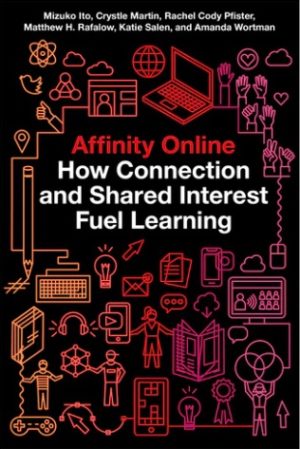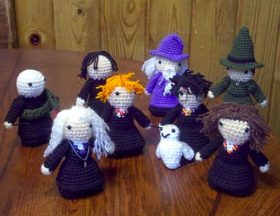A metaphor used by Global Kids Online researchers in a new blog post reminds me of research in the US that represented a huge digital youth milestone for me almost a decade ago – then of brand-new insights.
The metaphor is that of a ladder – a progression of online activities kids and teens engage in, starting with the most “attractive and accessible” ones, like watching video or hanging out with friends online, and stepping all the way up to activity such as civic engagement or involvement “in a campaign or protest.” A whole study could be done about the ranking of the activities in the chart you’ll find in their post, but the researchers acknowledge that “pressing questions remain about what society hopes children will or should do online” – and how interesting that the “ladder” replicates across three countries on three separate continents (Bulgaria, Chile and South Africa).

digital “ladder”
Why is this important? Because for too long we adults have been stuck on that first “rung” in the way we think about young people’s use of connected media. It’s overwhelmingly focused on the social and playful parts of kids’ practices, always with an undercurrent of concern and a subtext that they’re at best a waste of time. In many societies, this approach – not kids’ own experiences with tech – has shaped not just the way we think (often fearfully) about parenting, but also research and policy making. EU Kids Online tried a different approach in 2013.
Another ladder
But before you head over to the “ladder” post for the activities chart and some fascinating findings, a bit about that US research milestone I mentioned. It too was about a progression in young people’s online engagement: “Hanging Out, Messing Around and Geeking Out.” That’s the title of the 2009 book that summarized more than 5,000 hours of interviews with more than 800 US teens. They were conducted over three years by the more than 2 dozen researchers involved in the Digital Youth Project, which studied kids’ use of media at home, at school and in after-school programs.
This isn’t apples and oranges we’re looking at. Though the GKO researchers were looking at specific activities and the US researchers at styles of engagement, the “leveling up” that both projects surfaced suggests a growing depth of experience, meaning, and commitment, in the way many kids and teens engage with media – which gets buried in the negative press and political discourse.
Zooming in on ‘geeking out’
If you wonder what the levels in the title mean, they’re basically different “levels of investments in online activities,” the authors wrote. And as they level up, it’s definitely not just online activities. One of the Project researchers, Heather Horst, put it this way in a conversation with University of Southern California media professor Henry Jenkins: “Hanging out is when kids are using technologies…to hang out socially with their friends. Messing around is when they are looking around online for information, or tinkering with media in relatively casual and experimental ways. Geeking out is when they really dive deep into a specialized area of knowledge or interest” that wouldn’t necessarily be seen as “geeky” or traditionally related to tech, for example sports, music or needlework.
Yes, I said “needlework.” Because a perfect example of kids (and adults) geeking out around needlework online is “Hogwarts at Ravelry.” It’s in a new book that’s all about “geeking out” with connected media: Affinity Online: How Connection and Shared Interest Fuel Learning, whose lead author, Mizuko Ito, was a co-leader of the Digital Youth Project. [My full review of the book is in the latest issue of the Journal of Children and Media.]
17-year-old mentor
If the “Hogwarts” part of this needlework community’s name reminds you of Harry Potter, you’re right on the mark. Hogwarts at Ravelry is the Harry Potter-themed part of Ravelry.com, an online community for knitters and crocheters. Among many other examples of young people geeking out in a huge variety of interests, Affinity Online tells the story of “Amy,” a 17-year-old in Colorado who is an avid fiber crafter and pattern maker. As I wrote in my review, she has mastered multiple skills, including math and mentoring, “both to design her own patterns and help other community members design and make their own creations. A friend had first introduced her to Ravelry because she’d been looking for designs and inspiration after learning how to crochet from her grandmother and how to knit from a sister. Now she markets and sells her patterns online while supporting other fiber crafters in Hogwarts at Ravelry (which, by the way, was founded by a 10-year-old girl in 2009 and which by the time Amy joined had participants aged 11-70+).”

Needlecraft, Bollywood, WWE….
This is what “geeking out” means and in Affinity Online alone it happens in rich array of interests that include Bollywood dance, collaborative game design, anime music video making, engineering in Minecraft, mobilizing charitable giving, and WWE (Worldwide Wrestling Entertainment) scripting, role play and filmmaking.
We need more books – not to mention news articles, blog posts, videos and documentaries – about people like Amy and her peers who are learning, teaching, messing around, mentoring, inspiring, self-actualizing, organizing, mobilizing, etc., etc. – in online communities. We need to see more! How can we set policy based on the very limited view most of us have gotten – despite the work of researchers around the world who are turning up evidence of the meaningful and enriching play, work and socializing young people are doing in and with connected media? Certainly more and more parents, educators and policymakers will want to peer through these windows to watch children do “this” sort of climbing. We just may want to join them!
Related links
- Affinity Online: How connection and shared interest fuel learning, by Mizuko Ito, Crystle Martin, Rachel Cody Pfister, Matthew H. Rafalow, Katie Salen and Amanda Wortman
- Hanging Out, Messing Around and Geeking Out: Kids Living and Learning with New Media, by Mizuko Ito, Sonja Baumer, Matteo Bittanti, danah boyd, Rachel Cody, Becky Herr Stephenson, Heather A. Horst, Patricia G. Lange, Dilan Mahendran, Katynka Z. Martinez, C.J. Pascoe, Dan Perkel, Laura Robinson, Christo Sims, and Lisa Tripp
- Full review of Affinity Online in the Journal of Children and Media

[…] needlework, choreography, video editing, cooking, etc., with tech playing a supporting role (see this for examples). The latter book is about youth not […]